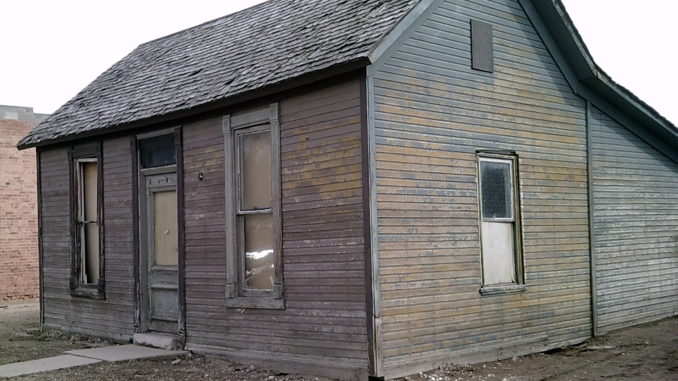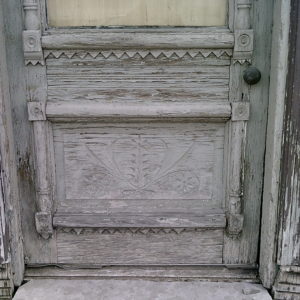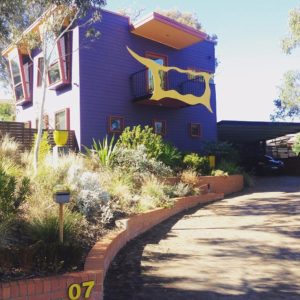
Marty Metzger
Norty Forty News
That old expression, “As boring as watching paint dry,” is kind of misleading. At least the process that takes a homeowner that far is anything but monotonous.
Just knowing where to start can be exciting based on all the color, texture and other choices now available. Considerations of what product to use should be based on more than simply personal preferences or trends. Remember, interior or exterior paint is a sizable investment and application quite labor intense. Starting over after just a couple years probably isn’t on too many folks’ bucket lists.
Anthony Mongillo, store manager at Guiry’s ColorSource in Fort Collins, offered many helpful tips. He noted that yellows, for example, fade faster than do darker colors, due to ultraviolet (UV) light exposure. Dark colors, however, tend to “chalk” over a period of years when a white residue similar in appearance to pollen appears. Specific primers are available to paint over chalky surfaces.
In fact, primers are primary for most jobs. Always prime over bare drywall or new texture before painting; use spackling to cover cracks, then primer, then your color. Two coats of paint are always recommended over primer.

Downtown Ace Hardware carries an extensive line of paint and supplies. Department Associate Shay said that paint can be applied over stain without the need for strippers. This goes for furniture as well as period pieces such as banisters, mantels, stairway treads, etc. Simply sand off any gloss polyurethane and apply primer. Stain-blocking and surface prepping produces a smooth, clean look.
Some people love wallpaper. But for those who prefer a bad horror movie over a wall plastered with mauve flowers on a queasy brown background, don’t yield to the temptation of simply throwing a couple gallons of paint at it. Mongillo recommends DIF Wallpaper Remover®, available in gel or spray. Simply follow product directions, and watch those paper posies droop and bite the dust!
Families with young children might want to consider a product’s washability/scrubbability. Mongillo recommended Scuff-X® by Benjamin Moore, which he called one of the best products on the market. Erasing a creative 3-year-old’s impromptu artwork from the wall he/she saw as a great canvas can be as easy as warm water and rag cleanup; or add a bit of mild soap for tougher messes. Sorry, kids.
Brushes and rollers are every bit as important as paint, if not more so, to assure a proper finish. For example, lambswool rollers are designed for oil-based products, not latex. Brush bristle quality will equally determine the quality of your work.
Chalkboard paint continues to be a popular application for small projects up to an entire wall. Benjamin Moore, advised Shay, has multiple colors available. A chalkboard wall—just the place for imagination to go wild.
Okay, you’ve finished your indoor paint job at an ideal temperature of 75-78 degrees. Mongillo noted that most paints nowadays are low or zero VOC (volatile organic compounds) and therefore produce little odor even when still wet. Nevertheless, be sure to also open windows because air circulation expedites drying time.
Let’s head outside now, because it’s a bright, beautiful day with no wind. The temperature is above 40 degrees but below 90. (Too hot and the finish will be uneven if one part dries faster than another.) Perfect conditions to transform your home-sweet-home into the neighborhood showplace!
Be sure to check with your HOA for any color restrictions, because not everybody appreciates dark purple with pink and yellow trim. Then peruse the nearly endless colors and shades available down those paint aisles. You’ll quickly feel overwhelmed by how many whites (and some with blue, green, pink or other tones) you have to choose from, let alone colors which are even more diverse. It’s best to grab a few sample cans of your top choices.

Apply a square of each directly on the house. Step back and select your favorite. The same technique goes for trims. It’s less expensive to try hues on small areas than to change your mind after half the house is covered.
Want to include that drab brick chimney in the makeover? At least two coats of exterior paint should be sprayed on to assure an even, weather-resistant finish. If you already have a painted chimney and want to reclaim its natural look, use spray stripper and then sandblast or power wash.
Exteriors can be tricky when it comes to paint longevity. Surfaces with lots of shade won’t need repainting as frequently as those in full sun. Remember, too, that you get what you pay for. The higher the paint quality, the better the UV protection, longevity, mold and mildew resistance, coverage, “hide,” and flexibility to reduce cracking.
Paint itself can last up to 20 years if properly stored, advised Mongillo. He said that air and temperature change take the greatest toll on product life. To extend usefulness of containers ½ gallon or larger, properly seal and store them inside a plastic bag in a closet. He recommended that amounts less than ½ gallon be transferred to a Tupperware container, properly labeled, and placed in a zip-lock bag.
If frozen, paint becomes unusable. Latex, which is water-based, is especially sensitive to cold temps and freezes at 32 degrees. Never store in an uninsulated garage; only in an insulated area with a consistent temperature.
Some miscellaneous but important tips:
- Never paint outside on a windy day—unless your goal is a textured finish of leaves, bugs, and maybe a neighbor’s airborne inflatable swimming pool.
- Northern Colorado is prone to hail. You won’t be able to fill in hail damage with paint. Use caulking to repair cracks.
- Estimate the cost of your paint job in advance. Coverage per square foot (indoor or outdoor over primer) depends on the surface texture. All can labels provide a rule of thumb. However, on average, one gallon will cover approximately 350-450 square feet.
- Many products provide warranties. Always follow directions on the can to the letter, and remember that improper surface prep is the main reason for product failure.
- The best advice a novice painter can get comes from paint stores whose professional associates know their product lines. Take advantage of their knowledgeable information rather than engaging in a costly guessing game.
Then just sit back, grab an ice tea, and enjoy the rewards of your hard work. It’s as relaxing as watching paint dry!
Support Northern Colorado Journalism
Show your support for North Forty News by helping us produce more content. It's a kind and simple gesture that will help us continue to bring more content to you.
BONUS - Donors get a link in their receipt to sign up for our once-per-week instant text messaging alert. Get your e-copy of North Forty News the moment it is released!
Click to Donate
